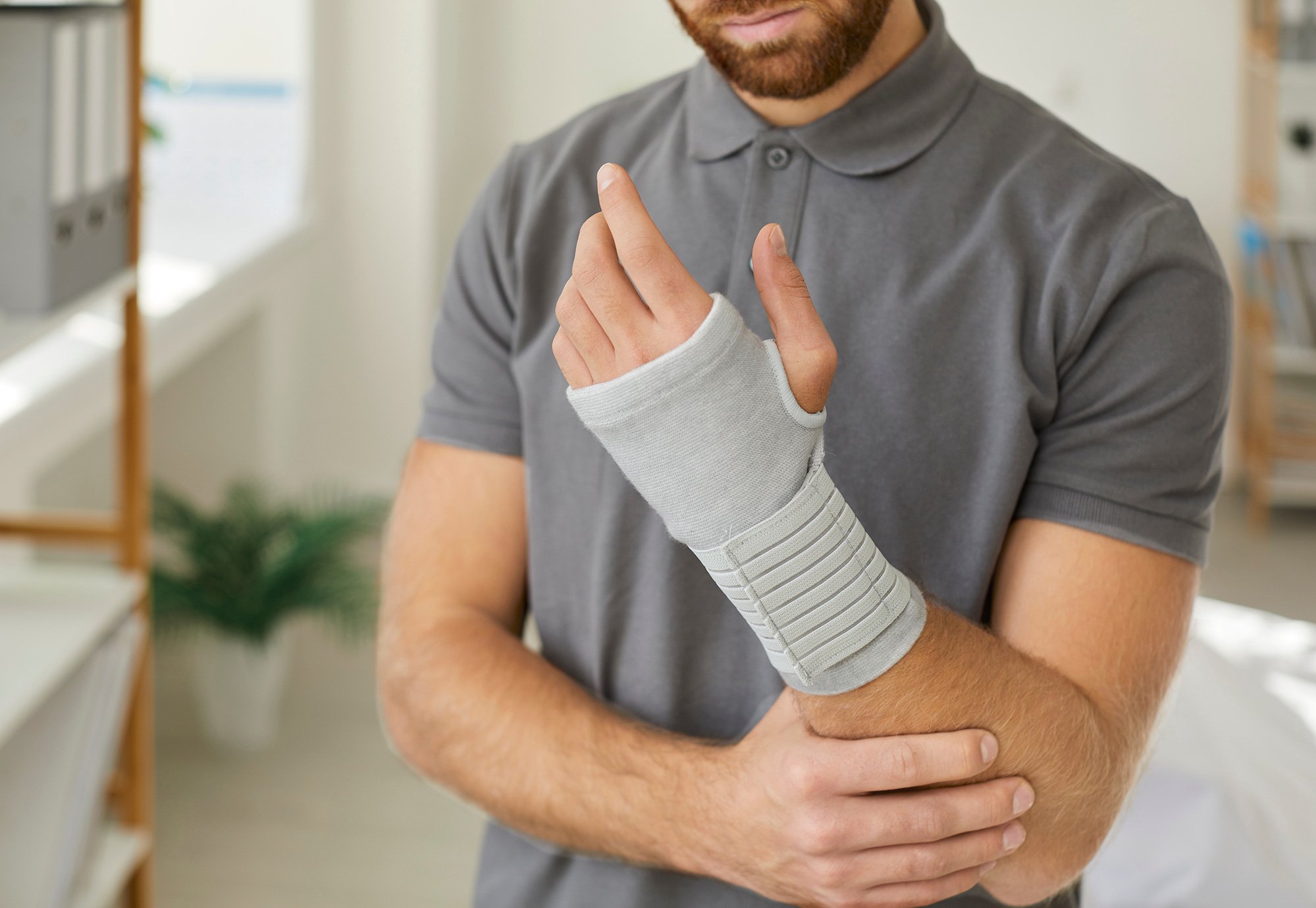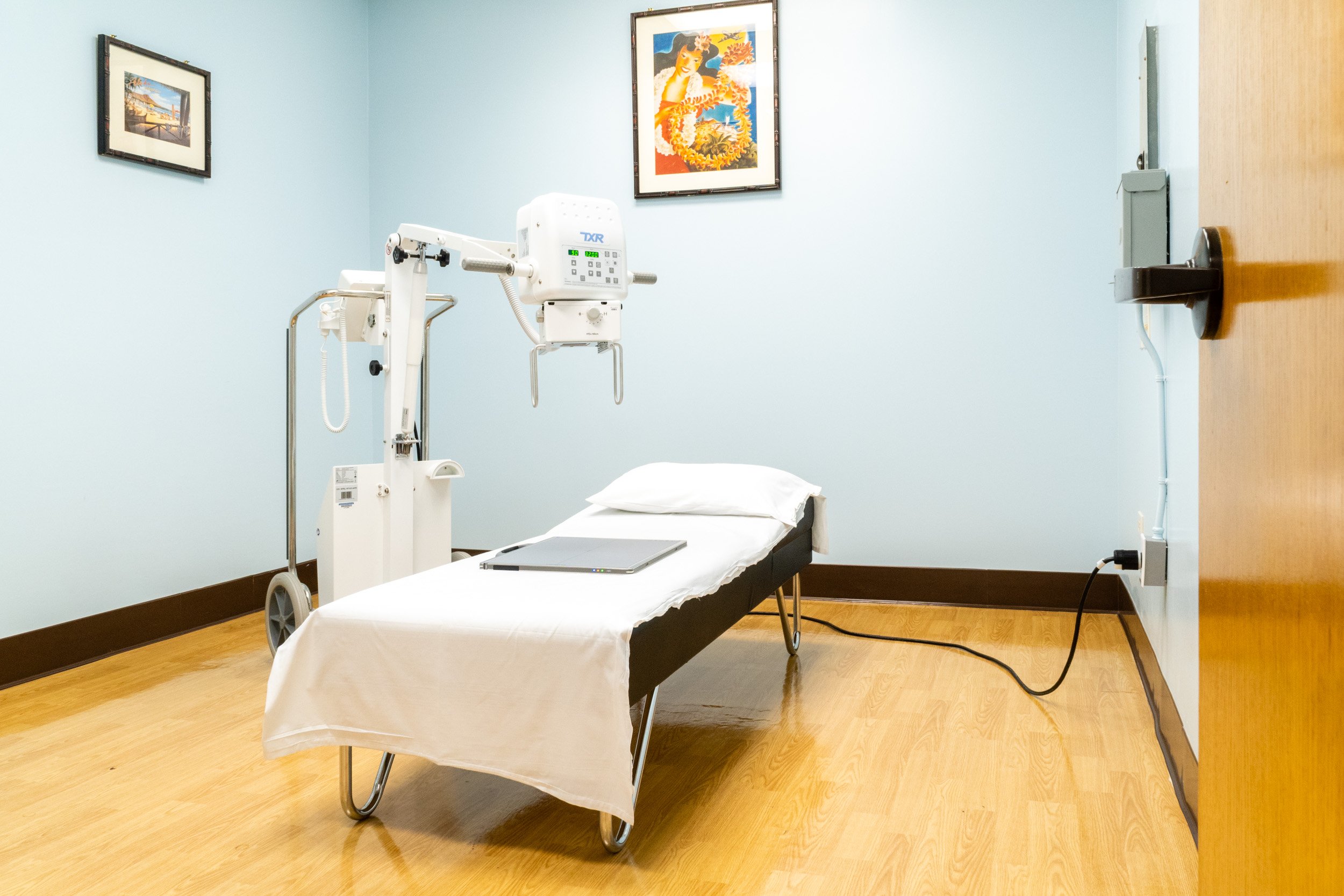What is a Wrist Fracture or a Broken Wrist?
What is a fractured or broken wrist?
Wrist fractures are very common and involve a break or crack in one or more bones in your wrist. The injury often occurs in the wrist (distal radius fracture) when people try to catch themselves during a fall or land on an outstretched hand. The fracture may also result from an accident (car, bike, skiing) or sports activity. You may also have a higher risk of suffering a wrist fracture if you have osteoporosis, where the bones become thinner and more fragile.
Regardless of how the injury happened, it’s important to treat the affected area as soon as possible. If left untreated the bones may not heal in proper alignment, and you can experience decreased range of motion and also decreased grip strength. This may affect your ability to complete everyday tasks like writing or buttoning a shirt. Immediate treatment will also help decrease pain and stiffness.
Learn more about the symptoms, causes, risk factors, diagnosis and treatment plans for wrist fractures in this article.
Symptoms
Common signs and symptoms include:
Severe pain that might worsen when gripping or squeezing or moving your hand or wrist
Tenderness
Bruising and swelling
Deformity - the wrist being in an unusual position
Causes
A wrist fracture can result from:
Falls - One of the most common causes of a broken wrist is falling onto an outstretched hand.
Sports injuries - Both contact and non-contact sports activities can cause wrist fractures. Usually, these conditions occur because of a fall on an outstretched hand.
Motor vehicle crashes - Car and motorcycle crashes can cause wrist bones to break and often need surgical repair. The severity of your injury will be evaluated by our orthopedic doctors.
Risk Factors
Taking part in certain sports activities and having osteoporosis (bone-thinning disease) may increase your chances of a wrist fracture. Examples of sports activities include:
Football and soccer, especially on artificial turf.
Rugby
Horseback riding
Hockey
Skiing
Snowboarding
In-line Skating
Jumping on a trampoline
Prevention
What can you do to prevent a wrist fracture? We have listed suggested tips below to help increase your bone strength, prevent falls and lower your chance of sustaining a sports injury.
Increase Bone Strength by:
Consuming a nutritious diet with calcium and vitamin D
Stay active by taking a brisk walk or other weight-bearing exercises
Quit smoking
Prevent Falls by:
Reorganizing your home - remove items that may cause trips such, as a throw rug, and make sure cords are flushed against walls.
Light up your home - make sure your residence is well lit
Install grab bars in your bathroom and handrails in your stairways
Avoid slippery surfaces
Wear comfortable shoes
Have your vision checked regularly
Protective gear for athletics
Wear wrist guards for high-risk activities such as in-line skating, snowboarding, rugby and football.
How is a Wrist Fracture Diagnosed?
During your consultation, Dr. Chen may conduct one or more of the following tests to determine if you have a wrist fracture.
History of Symptoms
During your visit, we will discuss your symptoms, when they began, any related injuries, review your medical history and discuss your general health.
Physical Examination
Dr. Chen will conduct a physical examination where he tests the range of motion, strength and sensitivity of your wrist and hand.
X-ray
Depending on your medical history, symptoms and the other tests performed, Dr. Chen may order an X-ray of the affected wrist to confirm the diagnosis.
If an X-ray is needed we have a digital X-ray machine in-house. So we can capture your imaging quickly and conveniently. There is no need to schedule another appointment at an outside imaging center.
Other Imaging
In some cases, additional imaging tests are needed to give the medical staff more information about your injury.
CT scans can reveal wrist fractures that are not seen on an X-ray. CT scans also show injuries to soft tissues and blood vessels.
MRIs use radio waves and a powerful magnet to produce detailed images of bone and soft tissues. Because they are more sensitive than X-rays, MRIs can reveal very small fractures and ligament injuries.
Treatment Options
At Orthopedics Hawaii, we believe surgery should always be the last resort. Non-surgical treatments can be effective for less severe cases and allow you to continue with your daily activity normally. If you have a severe case we may discuss a surgical treatment plan with you.
Overview
Dr. Chen will check to see if the broken ends of the bone are aligned properly to make sure there aren’t any gaps or fragments that overlap. If they are not aligned, he will adjust the pieces into their correct position through a procedure called reduction. Local anesthetic may be used during this procedure depending on the amount of pain and swelling.
During your treatment, it’s important to move your fingers regularly to prevent them from stiffening while your fracture is healing. Dr. Chen will show you how to move them during your appointment. We also recommend that if you smoke, to please quit. Smoking is shown to delay or prevent bone healing.
Non-surgical Treatments
Non-surgical options are usually tried first. They may include:
Immobilization
Your wrist may likely be placed in a splint or cast to restrict the movement of the fractured area. This is essential for the break to heal properly. You will also be instructed to keep your hand above your elbow as much as possible to reduce pain and swelling.
Medication
Depending on your case, an over-the-counter pain reliever may be recommended. Stronger prescriptions for narcotic medication such as codeine are rarely used. Although NSAIDs can help reduce pain, they may hamper bone healing, if used long-term. Dr. Chen will discuss the medication options with you.
You will likely be prescribed an antibiotic to prevent infection if you have an open fracture, a wound or break in the skin near the injury area.
Hand Therapy
When your splint or cast is removed we will discuss hand therapy with you. You’ll likely need handy therapy to learn rehabilitation exercises to reduce stiffness and restore movement in your wrist.
While hand therapy is beneficial, it may take several months or longer for complete healing.
Dr. Chen can write a prescription for hand therapy. We can recommend hand therapists or send the prescription to your therapist of choice.
Surgical Treatments
After reduction and immobilization, Dr. Chen will monitor your progress by reviewing new X-rays to see how it’s healing. In some cases, even after being in a splint or cast the bones have shifted. If this occurs, Dr. Chen may recommend surgery which may take the form of:
Closed reduction and pinning where your fracture will be aligned and temporarily held by pins. Once the break has healed the pins will be removed.
External fixation of the wrist where a metal frame is placed outside of your body to immobilize the fracture. Two or more pins are inserted through your skin and into the bone on either side of the fracture. Once the fracture has healed this will be removed.
Open reduction and internal fixation where implant pins, plates, rods, or screws are inserted to hold your bones in place while they heal. A bone graft may also be used to assist with healing.
These options might be necessary if you have:
An open fracture
A fracture in which the bone pieces move before they heal
Loose bone fragments that could enter a joint
Damage to the surrounding ligaments, nerves, or blood vessels
Fractures that extend into a joint
Complications
Complications of a broken wrist are rare, but they may include:
Prolonged stiffness, aching or disability - Although, pain and stiffness usually stop after your cast is removed following surgery, some patients have permanent stiffness and pain.
Be patient with your recovery. Everyone’s body is different and responds to treatment differently.
Schedule an appointment to speak with Dr. Chen to discuss additional treatment options such as a referral for physical or occupational therapy where you will learn exercises to strengthen your wrist, arm and hand.
Osteoarthritis - If your fracture extends into a joint it may cause arthritis years later. If you experience pain or swelling in your wrist long after a break, please schedule an appointment to see Dr. Chen for an evaluation.
Nerve or blood vessel damage - An injury to the wrist can affect adjacent nerves and blood vessels. Seek immediate medical care if you have numbness or circulation problems.
How Can Orthopedics Hawaii Help?
If you are experiencing wrist pain come in to see us. All of our patients are seen by Hand Specialist and Orthopedic Surgeon Dr. Sam Chen. We recommend scheduling an appointment by calling (808) 744-3360 or emailing aloha@orthopedicshi.com.
Source: https://www.mayoclinic.org/diseases-conditions/broken-wrist/diagnosis-treatment/drc-20353175
Source: https://www.hopkinsmedicine.org/health/conditions-and-diseases/distal-radius-fracture-wrist-fracture
Source: hhttps://www.mayoclinic.org/medical-professionals/orthopedic-surgery/news/distal-radius-fractures-in-older-versus-younger-patients/mac-20429805




